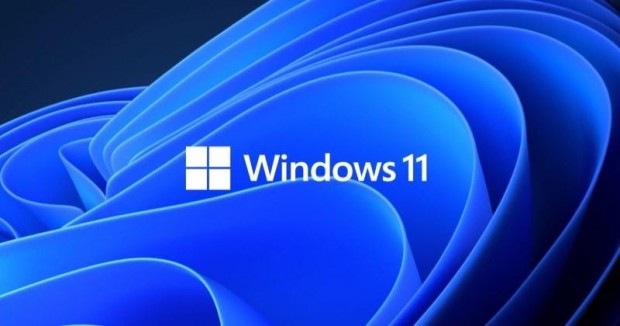
As a shock to everybody, Microsoft recently unveiled Windows 11 even after talking about how Windows 10 would inherently be the last iteration of the world's most used OS. With its features now all being disclosed, some have specifically piqued everyone's interest.
One such feature is the ability to run Android applications natively on the platforms. Today, we're going to talk about two distinct methods that you can use to run any Android application or game on your Smartphone.
Why Do You Need Emulation?
Let's face it. Everyone has an Android phone. Why would you need to Emulate an application on your Laptop or PC in the first place? Well, there are a few compelling reasons. Firstly, you open your PC up to a plethora of productivity and casual applications like Snapchat, TikTok and Photo Editors that are simply not available on Windows.
Plus, your Android Device might not let you sustain long gaming sessions, or you might just end up risking your phone's battery due to the constant heat it generates. As such, Emulating is a viable and generally recommended alternative to running Android Applications as it gets rid of all these issues and lets you run Windows / PC applications alongside Android games and applications simultaneously.
Method 1: Using Android Emulators:
Android Emulators have been the go-to option to run Android applications or games for a long time. They were introduced when Android first came out and have been a staple ever since then.
Over the years, many Android Emulators have been released, with each having its drawbacks and caveats. Some ran smooth but weren't compatible with low-end systems, while some ran better but did not work with every application. However, as time passed on, Emulators have now reached a state where they can provide a true near-native experience the same way you could expect from your actual Android Phone.
When it comes to Emulators, there are a few that top the charts in 2021. There's BlueStacks, Memu and perhaps the most powerful android emulator, LDPlayer. It is known for its quick support for newly released games and an addendum of features that make it worthwhile for any serious gamer or professional.
In any case, most of the Emulators mentioned above primarily run almost all Android Applications and Games out there. However, the main difference between all of them is in terms of their optimization and what features they have.
Here's how you can download and run an Android Application on an Emulator on Windows 11:
-
Download an Emulator like LDPlayer
-
Open the Emulator and Search on the PlayStore
-
Log in to the PlayStore or Register your Account
-
Download the Game / Application
You should now be able to run the game natively with no issues whatsoever. As mentioned earlier, each Emulator has its features that help differentiate them from one another. For example, LDPlayer has its multi-instance feature, which lets you create multiple instances of an application allowing you to log in to multiple accounts at once and use them. You can try to play TikTok on PC with LDPlayer.
Method 2: Windows 11 Emulation
As mentioned earlier, the second method which you can employ is taking advantage of the native emulation feature that Windows 11 provides. Intel teamed up with Microsoft to bring native Android applications running on x86 architecture.
Surprisingly, you will still be able to run these applications natively on both ARM and AMD chips with no issues whatsoever. The applications will not need to be dependent on your Android device syncing with your PC.
So, now, instead of Microsoft urging developers to convert their application to Windows, the Operating System will be able to run these applications natively with slight to no modifications in the source code.
For this to happen, Microsoft has not taken the help of Google, surprisingly, the creators of Android but have instead joined hands with Amazon. So, you won't be getting the Google PlayStore but will instead be getting the Amazon App Store integrated with the already present Microsoft Store.
So, most of the applications and games that you download for Android will be from there. There will be an integrated search and discovery option and an auto-update option for applications in Microsoft Store as well.
Currently, it is not very clear as to if you would be able to run applications that are sideloaded from other sources on Windows natively in the first place. However, if rumors are anything to go by, it can be assumed that it will be quite limited and will not reach the expansiveness of Emulators.
If you have to download the Dev Beta from the Windows Insiders Program, here are the steps you need to follow to run an Android Application on Windows 11 using Microsoft's proprietary emulation engine:
-
Open the Microsoft Store
-
Search for an Android Application
-
Download the Application
-
Open the application as you would any app.
Currently, support for Android games and how they would run has still not been talked about, which is a major feature for most who download Emulators in the first place.
Most Emulators like LDPlayer and BlueStacks have implemented tons of features that present gamers with a true advantage when emulating their games on a PC. It is still unclear if Microsoft will follow the same route. However, the answer seems that would be quite unlikely.
Conclusion:
With Windows 11 coming in a few months, it can be seen that Microsoft is trying to integrate with Android applications as quickly as possible. However, with no word as to whether games will receive the same treatment and knowing that the Amazon AppStore is far less competitive as compared to Google's Play Store, it seems that Emulators like LDPlayer will still hold the cake for when it comes to Android Emulation for the foreseeable future.
* This is a contributed article and this content does not necessarily represent the views of mobilenapps.com
more stories from How To
-
iPhone Hack: How to Check Microphone-Enabled Apps And How to Turn Off Their Access for Privacy
Explore the nuanced landscape of iPhone microphone privacy, from recent breaches to proactive user strategies.
ernest hamilton -
How to Safely Reset Your Android Phone Before Selling or Passing It On
Learn how to safely factory reset your Android phone with this comprehensive guide. Protect your privacy before selling or passing on your device. Follow this step-by-step instructions for a seamless transition.
ernest hamilton -
How to Fix iPhone Boot Loop: Unlock Your iPhone's Potential with This Step-by-Step Guide
Learn how to conquer the iPhone boot loop with this comprehensive step-by-step guide. Follow the expert instructions to restore your device's functionality and bid farewell to endless reboots
ernest hamilton -
12 Ideas to Crafting a Memorable Mother’s Day Post on Your Business’ Social Media
Discover innovative post ideas and expert tips to engage your audience and drive sales. Read now and make this Mother's Day unforgettable!
ernest hamilton -
‘Coin Master’ Guide: How to Find Chests to Get More Card Collections, XP and Coins
Learn the secrets to unlocking Coin Master chests and supercharge your gameplay! This comprehensive guide reveals expert strategies for acquiring coveted chests, maximizing rewards, and dominating the game.
ernest hamilton -
Roblox: WS10'S MM2 Codes (May 2024)
Unlock rewards with WS10'S MM2 codes for May 2024 in Roblox! Get ahead in the game with exclusive bonuses.
ernest hamilton -
Idle Office Tycoon May 2024 Codes: Get Free Diamonds & More!
Unlock free diamonds and more in Idle Office Tycoon with the May 2024 codes! Redeem them now for exclusive rewards.
ernest hamilton -
Finding GBA ROMs for Your Delta Emulator: A Handy Guide
Looking for GBA ROMs for your Delta Emulator? Check out this handy guide to find and download your favorite games hassle-free!
ernest hamilton










